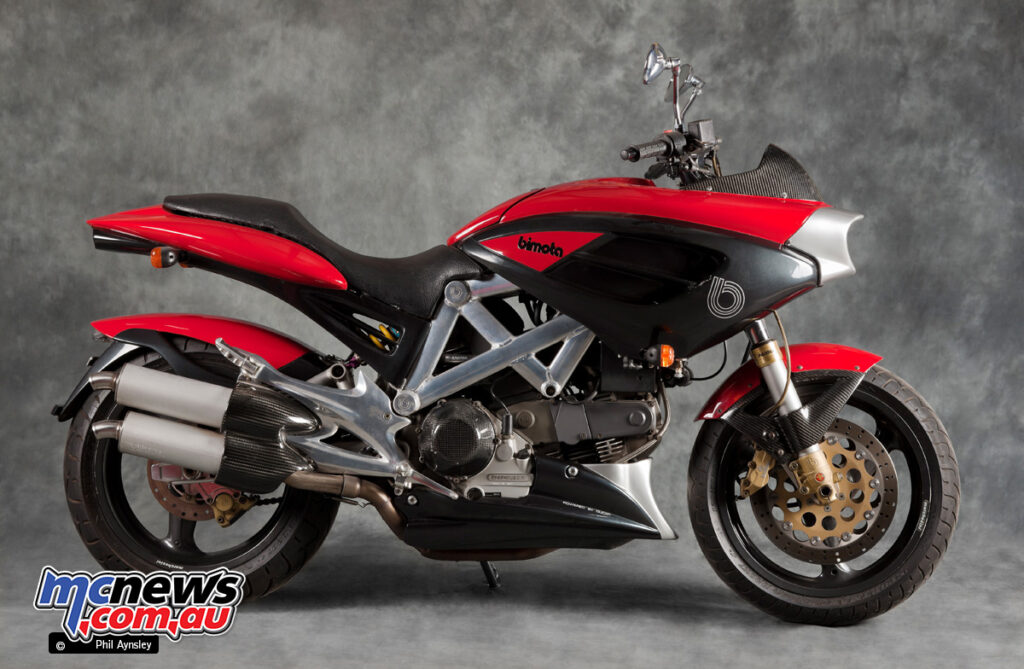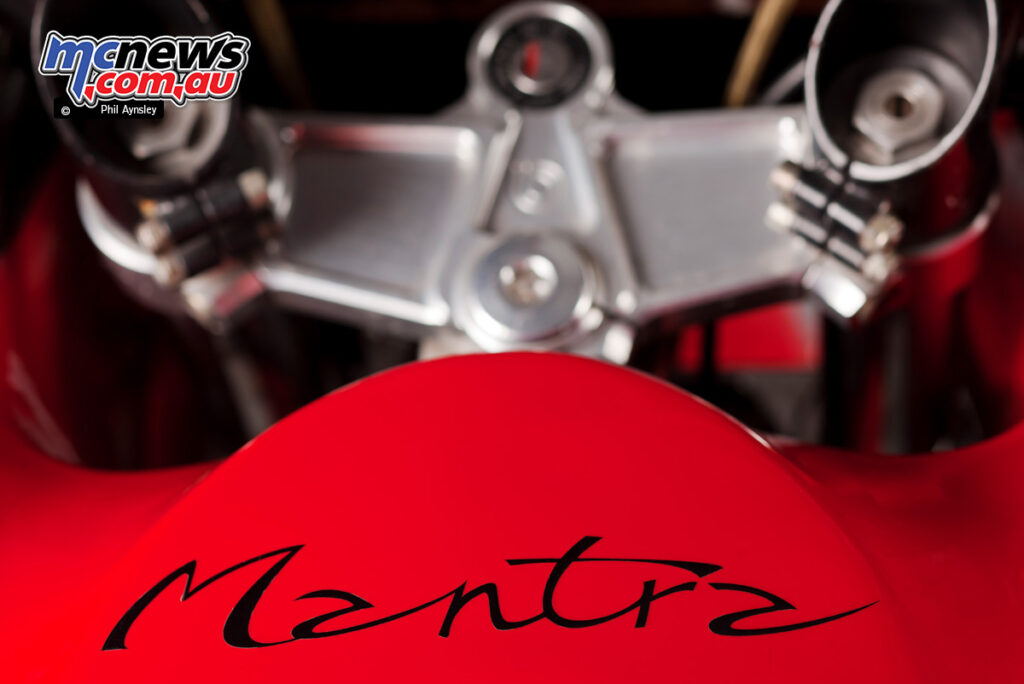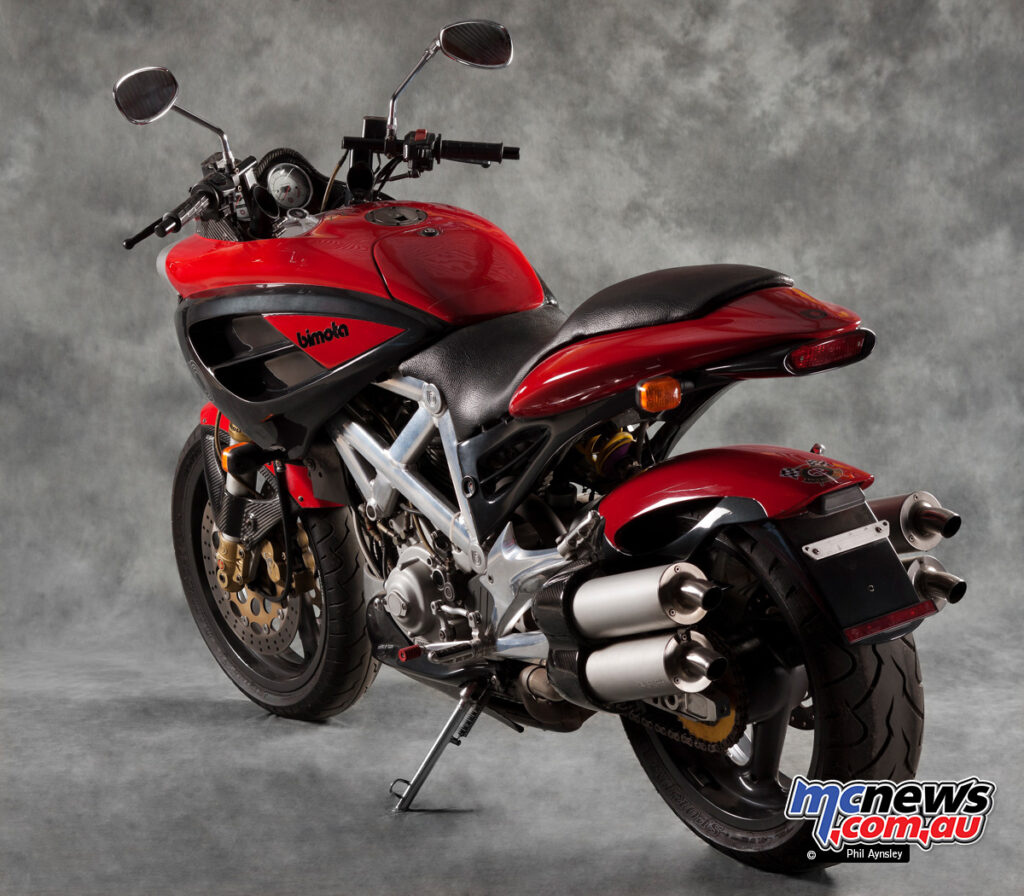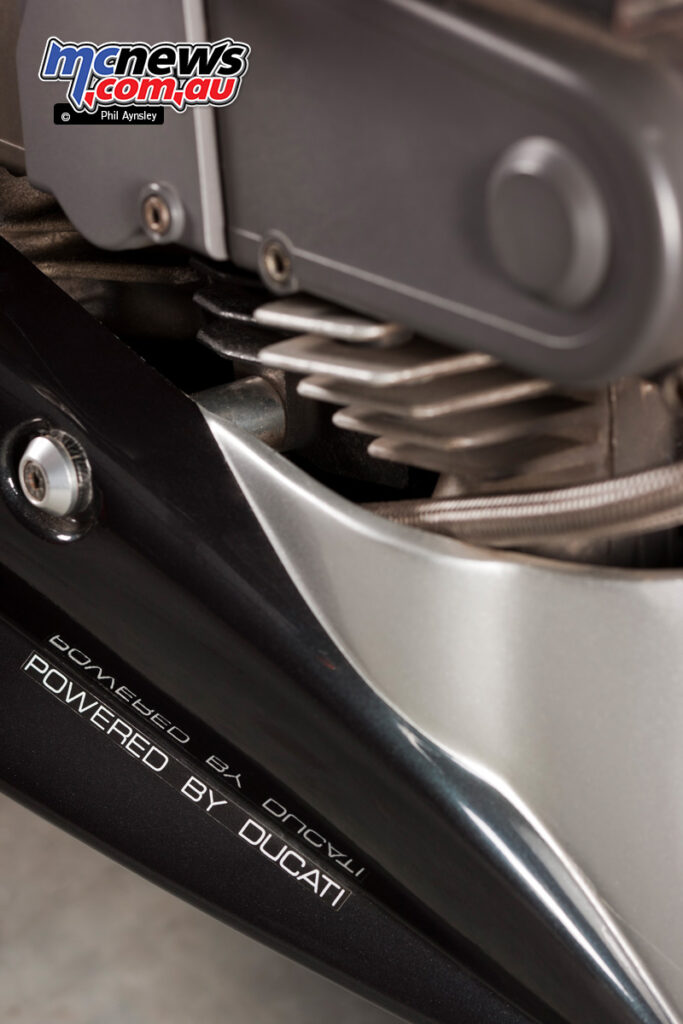Bimota DB3 Mantra
With Phil Aynsley
Rarely has a bike been so polarising as the Bimota DB3 Mantra, which means “tool of thought” in Sanskrit! It was the company’s attempt to widen its range with a naked bike – and was actually, by all accounts, an excellent ride. It also sold well by Bimota standards with 454 built.

The design was the most radical of three presented by Yugoslavian-born Frenchman Sacha Lakic after he was commissioned by Bimota’s General Manager Walter Martini to produce something ‘spectacular’. He was to provide only the styling of the bodywork; the chassis was designed by long-term engineer/designer Pier Luigi Marconi.
Lakic, interviewed later, said he was inspired by Rumi’s Gobbietto – see Rumi | From submarines to motorcycles and that the production Mantra differed in several important respects compared to his prototype, first displayed at the Cologne Show in December 1994.

Firstly the headlight from the Yamaha FZR600 was used rather than the much smaller light fitted to the prototype, which changed the lines of the fairing considerably. Secondly it was decided to split the fuel-holding section of the tank into two parts allowing a lower centre of gravity.
The problem being the tank as a whole had to be made much wider to attain the volume of fuel required. Other features that ended up being employed on the production bike were the handlebar mounts and the walnut dashboard (later changed to a plastic substitute).

The DB3’s chassis was a departure from Bimota’s previous tubular steel space frame or twin-spar alloy beam designs. It employed an oval-section alloy trellis that had the swingarm (a mix of square and round alloy tubes) pivoting directly from the engine crankcases. An off-centre monoshock was used. The wheelbase was a compact 1370mm (60mm less than the Monster’s) and the dry weight 172 kg. The company’s BB1 used the same basic chassis.
Ducati’s 904cc V-twin, as fitted to the 900SS and Monster, was the power plant and used in standard trim apart from Bimota’s own airbox design and 38 mm Mikuni carbs. Power was a claimed 86 hp at the crankshaft. For ease of mounting two small 12 V batteries were wired in parallel. A small storage compartment was provided in the top rear of the tank.

Production began in late 1995 and the Mantra was priced about 15 per cent lower than the SB6 and YB11, making it the ‘entry level’ model for the company. All the 404 of the first version were painted yellow, apart from a small number of red bikes exported to Japan.
A second version (only 50 built) was manufactured in 1998. These had a more streamlined fairing with a reshaped headlight bezel, different rear mudguard and hugger, tubular handlebars on risers in place of the original clip-ons and three-spoke Antera wheels. Red paint was an option. The factory also offered kits to update the first version to the new styling.
The later DB4 used the same chassis as the Mantra but fitted with more conventional bodywork.


































